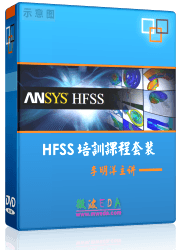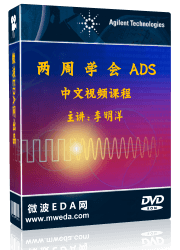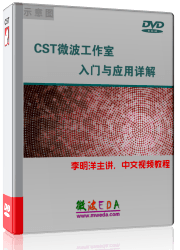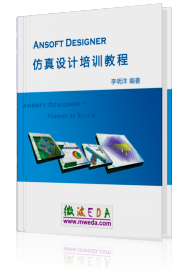Dielectric / Magnetic Dispersion Fit
Materials New/Edit New/Edit New Material New Material Conductivity Conductivity Dispersion Dispersion [Dispersion List [Dispersion List
Edit  Object Properties (
Materials:material1 Object Properties (
Materials:material1 Properties Properties Dispersion Dispersion Dispersion List) Dispersion List)
This dialog offers the possibility of defining a specific
material dispersion curve, that is automatically fitted to the specified
material model. The following description applies both to the dielectric
and magnetic dispersion fit, as the features, control and material setup
is exactly the same.
Eps (Mue)
Fitting scheme: Several different dielectric (magnetic)
dispersion models can be chosen. The models are: Conductivity, General 1st order, General 2nd
order and
General Nth order. For detailed information about
these schemes see the Material Overview.
Frequency/Value'/Value''
(Frequency/x'/x''/y'/y''/z'/z'') / Weight: In this list box, the specific
eps' and eps'' (mue' and mue'') can be defined by setting several values
at different frequency points. Moreover to each frequency a weight
(value greater than/equal to 0.0) is assigned in order to direct the interpolation
algorithm and to enforce a reduced error in correspondence of the given
frequency point.
In case a conductivity
model is given for the dielectric dispersion the relationship between
the eps' and eps'' value required in the list box and
the conductivity value may be found in Material
Overview (HF) - Conductivity Models.
An important observation
is that in correspondence of General
Nth order fitting, due to specific algorithm requirements,
the weight behaves as a switch between considered and ignored samples.
A weight less then 1.0 forces the interpolation algorithm to ignore the
given sample, whereas a weight greater/equal 1.0 to consider the sample
itself.
Max order: This control is available only
in case of General
Nth order fitting. It enables the user to specify
the maximum allowed model order (total number of real and complex poles
each counted with the corresponding multiplicity). The search of the best
fitting model is then stopped to the given maximum order even if the error
convergence criterion is not fulfilled.
It
should always taken into account that increasing the model order may improve
the quality of the fitting but at the same time the simulation complexity
in terms of memory and computational time.
Used order: Displays the effective model order provided
by the interpolation algorithm. The model order corresponds to the total
number of real and complex poles each counted with the corresponding multiplicity
(in formulas, Order = num Real Pole + 2 x num Complex Poles).
Error limit: This
control is available only in case of General
Nth order fitting. It enables the user to specify
the error stopping criterion during the search of the best fitting model.
The error should be interpreted as the maximum relative error computed
in correspondence of each given frequency point between the complex epsilon
(mue) value and the fitting curve. A useful interpretation of the Error limit
is as "error" or "inaccuracy" during measurement of
the real material properties.
Error: Displays the obtained fitting error. The error should
be interpreted as the maximum relative error computed in correspondence
of each given frequency point between the complex epsilon (mue) value
and the fitting curve.
Details...:
Opens a dialog displaying information about the fitted model, in terms
of position of zeroes and poles in the complex
plane.
The representation
is subdivided in first and second order contributions. The first order
contribution corresponds to a real pole, whose frequency is computed and
shown.
The second order
contribution may derive from a couple of real poles or from a couple of
complex conjugate poles. In the former case the frequency of the poles
is computed. In the latter case the resonance frequency of the pole together
with the quality factor (Q) is shown.
The description
of these parameters and the mathematical formulas that relate the first
and second order polynomial coefficients to the physical interpretation
of poles, zeroes and resonance frequencies may be found in Material
Overview (HF).
Use data in frequency range: This control, available in case of General Nth order
fitting, allows the fitting algorithm to use only the frequency data points
that lie within the "frequency range settings" defined by the
user (see also Frequency
Range Settings). Activating this check box enables an accurate data
fitting of the material resonances which occur in the simulation bandwidth
of interest using possibly a reduced number of poles and zeroes with respect
to the complete data fitting. And this, in turn, translates into benefits
for the simulation complexity in terms of memory and computational time.
Load
File...: Opens a file selector dialog to specify a ASCII file containing
point coordinates.
The file is formatted
in lines which specify the frequency points. In case of isotropic "Normal"
material, each line has four entries specifying respectively frequency,
value of real and imaginary part of eps, i.e. eps' and
eps'', (mue, i.e. mue' and mue'') and weight.
The weight field may be skipped and is assumed by default equal to 1.0.
In case of "Anisotropic"
material, each line has eight entries specifying respectively frequency,
real and imaginary value for X/Y/Z eps (mue) components and weight. Also
in this case the weight field may be skipped and is assumed by default
equal to 1.0.
Moreover
it is possible to set a default frequency unit scale which is applied
to all loaded data samples.
Delete: Press this button to delete all selected rows in
the dispersion fit list box.
Clear List: Press this button to delete all entries of
the dispersion fit list box.
OK
Accepts the input and closes
the dialog.
Cancel
Closes this dialog box without
performing any further action.
Apply
To apply the settings and show
the fitted curve.
Help
Shows this help text.
See also
Material Parameters: Material
Overview (HF), Dispersion




HFSS视频教程
ADS视频教程
CST视频教程
Ansoft Designer 中文教程
|